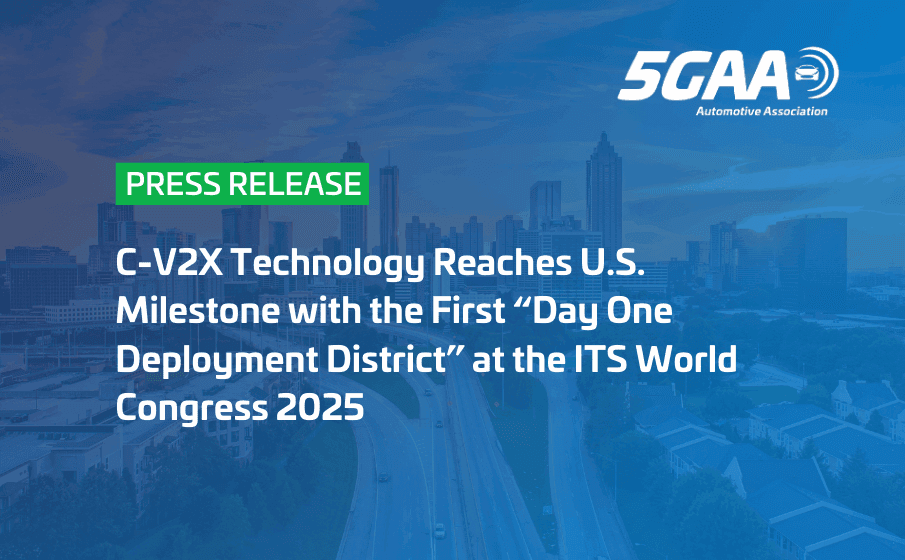
C-V2X Technology Reaches U.S. Milestone with the First “Day One Deployment District” at the ITS World Congress 2025
- The 5GAA Day One Deployment Guide was instrumental in enabling the largest C-V2X deployment during the “Day One Deployment District” in Atlanta.
- 5GAA members demonstrated real-world C-V2X applications showing immediate public value and nationwide scalability.
ATLANTA, U.S. – 3 September 2025 — The U.S. connected vehicle ecosystem took a major step forward as Atlanta became home to the nation’s first “Day One Deployment District” for Cellular Vehicle-to-Everything (C-V2X) technology. The 5GAA Vehicle-to-Infrastructure Communications Day One Deployment Guide was instrumental as a benchmark for C-V2X roadside infrastructure installations such as those earning the spotlight at the ITS World Congress 2025 for the Georgia Department of Transportation (GDOT) and the permanent enhancements for the downtown district.
5GAA members played a key role in showcasing ready-now applications for C-V2X technology in a live urban traffic environment and the clear potential for deployment in other states and cities.
This milestone comes at a moment when vulnerable road user traffic fatalities remain near the highest levels ever recorded, and with traffic congestion costing the U.S. economy more than $36 billion[1] annually. With an estimated nationwide deployment cost of $6.5 billion, as estimated in the ITS America National V2X Deployment Plan, C-V2X offers a powerful solution to enhance road safety.
“Day One Deployment District” also builds a bridge for establishing the C-V2X ecosystem in Atlanta, as OEMs progress from pilot projects toward production-ready architectures. Live demonstrations by 5GAA members and other industry leaders illustrated how C-V2X can offer immediate public value through:
- Faster emergency response with traffic signal preemption and real-time alerts
- Enhancing safety for vulnerable road users
- Lower local agency expenses, reducing costs for school buses and public fleets
- Streamlining tolling and parking through seamless digital transactions
John F. Kwant, Executive Director Americas, 5GAA, said, “Atlanta’s Day One Deployment District proves that C-V2X is ready for prime time. As the global cross-industry association for connected vehicle technologies, 5GAA has worked with its members, public agencies, and technology leaders to turn C-V2X deployment guides into reality. This milestone shows what’s possible when we align standards, infrastructure, and industry commitment”.
With the “Day One Deployment District” anchoring C-V2X in Atlanta, opportunities will also emerge for streamlined revenue streams for local agencies and toll operators. The deployment confirms the State of Georgia’s position as a champion of connected-transportation innovation.
Please see our brochure about the 5GAA members’ innovations here.
About the 5GAA
The 5G Automotive Association (5GAA) is a global, cross-industry organization of more than 110 members, including leading global automakers, Tier-1 suppliers, mobile operators, semiconductor companies, and test equipment vendors. 5GAA members work together to develop end-to-end solutions for future mobility and transport services. 5GAA is committed to helping define and develop the next generation of connected mobility, automated vehicles, and intelligent transport solutions based on C-V2X. For more information about 5GAA, please visit www.5gaa.org. Media contact: marcom@5gaa.org
[1] The Economic and Societal Impact of Motor Vehicle Crashes, 2019 (Revised): https://crashstats.nhtsa.dot.gov/Api/Public/ViewPublication/813403.pdf
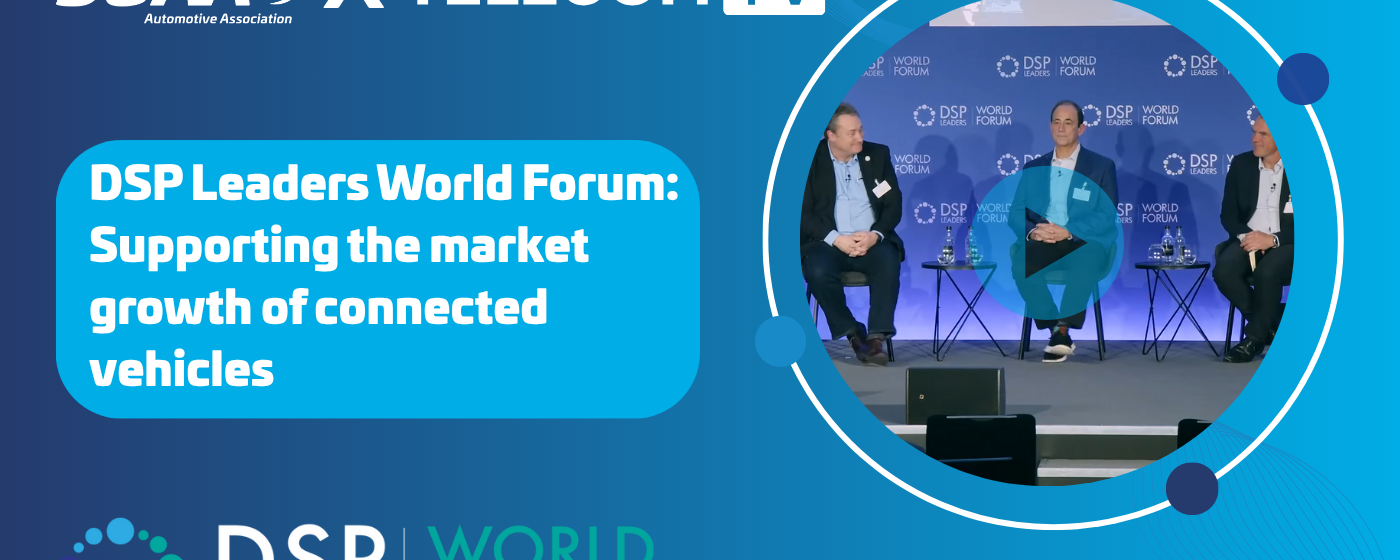
DSP Leaders World Forum: Supporting the market growth of connected vehicles
In this cross-industry panel discussion of TelecomTV’s DSP Leaders World Forum, leaders from Jaguar Land Rover, Wind River and 5GAA explored how telcos and automotive OEMs can better align to support the growth of connected vehicles. From the rise of the software-defined vehicle to monetisation models, regulatory drivers and safety-critical connectivity, they look at the opportunities – and hurdles – to creating smarter, more responsive vehicles. With practical insights on APIs, over-the-air updates, digital twins and vehicle-to-everything (V2X), this debate revealed what it will take to make the connected car ecosystem truly work.
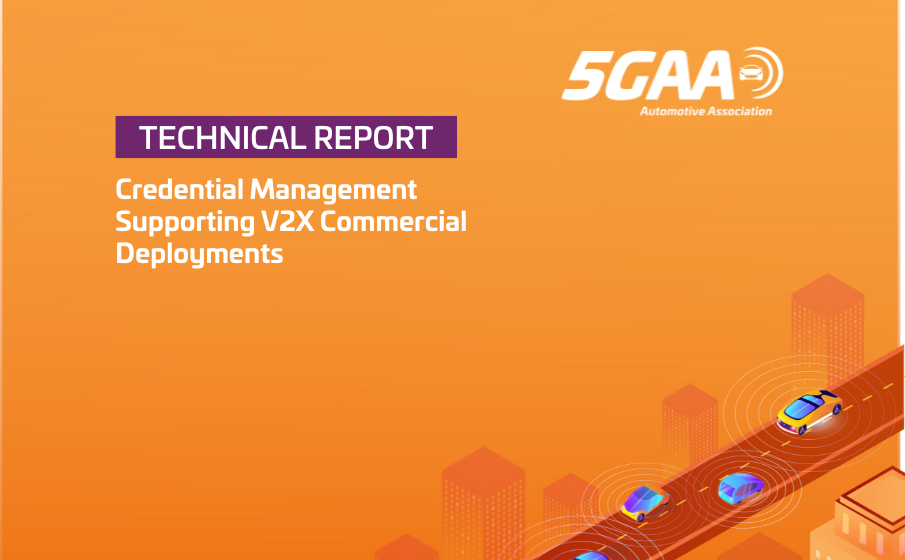
Credential Management Supporting V2X Commercial Deployments
Currently, for V2X direct communication, there is no available common policy (certificate policy for Public Key Infrastructure, or PKI, operators) for Security Credential Management System (SCMS) in the U.S. or Canada. A few SCMS providers created their own policies, which are not only incomplete but there are no published common policy documents feasible for SCMS PKI operation, hindering the widespread adoption of the technology. The Government of Canada sponsored an effort which resulted in a model for consideration.
A common Certificate Policy (CP) would help facilitate an ecosystem supporting interoperability and shared trust for V2X direct communication. The European Union addresses this issue by taking a central regulatory role, creating the CP, Security Policy (SP) and C-ITS Point of Contact (CPOC) documents that govern a V2X PKI for direct communication. North America need not duplicate what has been done elsewhere, though an accepted policy will build a greater ecosystem and support V2X direct deployment among a diverse set of automakers and other transport agencies.
The Certificate Policy Proposal contributing to this Work Item (WI) evolved into a Technical Report (TR) that develops a clear CP leveraging global best practices for security PKI and practical experience securing V2X direct communication, as well as common processes to facilitate an approach to SCMS.
For V2X mobile network communication, certificates are needed to authenticate interconnected backend systems and to protect communication between the systems. This Technical Report also elaborates on how to handle those certificates.
Download the Technical Report here.

DSP Leaders World Forum
Panel Discussion: Supporting the market growth of connected vehicles
Date & Time: Tuesday, 3 June 2025 | 14:40 – 15:25
Location: The Fairmont Windsor Park, Windsor, UK
As the connected and autonomous vehicle market accelerates, the global value of Vehicle-to-Everything (V2X) technology is expected to soar within the next decade. This evolution—culminating in the widespread deployment of 5G-V2X—marks a critical shift toward the software-defined vehicle (SDV), where advanced connectivity features are embedded from the ground up.
This panel brings together industry leaders to explore how the automotive ecosystem is preparing for this transformation and what is needed to support large-scale market growth. From evolving business models and cross-sector collaboration to overcoming deployment barriers, the discussion will also examine the crucial role that telecommunications providers must play to meet rising demands for seamless, reliable, and secure connectivity.
5GAA will be represented by CTO Maxime Flament, who will offer insights from the association’s work at the intersection of telecom, automotive, and infrastructure, and highlight key enablers for achieving truly connected mobility.

Driving the Future: 5GAA Brings First-Ever Satellite and 5G-V2X Direct Vehicle Connectivity to Life in Paris
- In a global premiere, 5GAA members demonstrated connected vehicles using non-terrestrial networks (NTN), complementing terrestrial 4G and 5G networks
- The event featured the first on-the-road, live-traffic demonstration of 5G-V2X Direct technology capabilities for advanced connected mobility services
- 5GAA members showcased ready-to-deploy vehicle-to-network (V2N) technologies improving road safety in real traffic conditions
PARIS, 15 May 2025 — For the first time worldwide, the 5G Automotive Association (5GAA) showcased connected vehicles using non-terrestrial networks (NTN) for emergency messaging, as well as 5G-V2X Direct for advanced detection of vulnerable road users (VRU) in real-traffic conditions. 5GAA members also demonstrated the readily available capabilities of Vehicle-to-Network (V2N) services.
“Today, we saw real vehicles on real roads, connected through cutting-edge technologies such as satellite, 5G-V2X Direct and commercial networks. This is the future of automotive connectivity, and it’s closer than you think,” said 5GAA Chairman Christoph Voigt.
5GAA members, vehicle manufacturers BMW Group and Stellantis and technology partners Anritsu,Cubic³, Deutsche Telekom, HARMAN, Jember, LG Electronics, Qualcomm Technologies, MediaTek, Rohde & Schwarz, Rolling Wireless, Skylo, VEDECOM Institute and Viasat demonstrated NTN satellite connectivity. Demonstrations focused respectively on realising hazard warning and emergency messaging use cases in the vehicle, as well as illustrating how NTN will complement terrestrial 4G and 5G networks in the future. Demonstrations on public roads emphasised the vision of how NTN can support ubiquitous automotive connectivity for connected services with seamless integration and switching between NTN and terrestrial networks to enable voice communication. In the future, car drivers may not even realise that satellite connectivity is being established instead of using a terrestrial network. According to 5GAA 2030 Roadmap, the initial market deployment of satellite connectivity in vehicles is expected by 2027 (based on IoT NTN 3GPP Release 17).
Anritsu, Keysight Technologies, Rohde & Schwarz, and MediaTek complemented the NTN demonstrations with parallel test equipment measurements for performance verification.
For the first time on the road, 5GAA member Valeo, in collaboration with Marben, demonstrated 5G-V2X Direct, in which two vehicles shared sensor data, triggering a warning of a pedestrian crossing at an obstructed intersection. This demonstration illustrated how 5G-V2X Direct (based on 3GPP Release 16) will enable vulnerable road users’ advanced protection by leveraging sensors and camera feeds from other vehicles to alert drivers, paving the way for smarter mobility. As per the 5GAA Visionary 2030 Roadmap, 5G-V2X is expected to be mass-deployed in commercial vehicle models starting from the time horizon 2026-2029.
The public road demonstrations continued with V2N technology for road users’ protection. 5GAA members, including Nokia, Orange, Stellantis, Valeo, and VEDECOM Institute, showcased interoperable V2X Platforms with vehicles, mobile applications and smart intersections (equipped with cameras and connected via the 5G networks) sharing collective perception to enhance road users’ safety. Additionally, HARMAN and u-blox showcased Emergency Electronic Brake Light (EEBL) near-real-time alerts to prevent hard braking events, in line with the upcoming 2026 Euro NCAP local hazard requirements, and used precise positioning techniques to prevent false alerts.
5GAA members Rohde & Schwarz, S.E.A., Keysight and Orange alsoexhibited Next Generation Emergency Call (NG eCall) verification and network performance.
The event, hosted by Telecom-Paris, highlighted how 5GAA is developing new standards for safety and innovation in automotive connectivity in Europe and globally.
Please see our brochure about the Paris demonstrations here.
A French version of this press release is also available for our French-speaking audience here.
Discover What Our 5GAA Members Are Saying here.
About the 5GAA
The 5G Automotive Association (5GAA) is a global, cross-industry organisation of more than 110 members, including leading global automakers, Tier-1 suppliers, mobile operators, semiconductor companies, and test equipment vendors. 5GAA members work together to develop end-to-end solutions for future mobility and transport services. 5GAA is committed to helping define and develop the next generation of connected mobility, automated vehicles, and intelligent transport solutions based on C-V2X. For more information about 5GAA, please visit www.5gaa.org.

5GAA Conference: France 2030 & Beyond: Accelerating Connected Mobility
On 15 May 2025, the 5G Automotive Association (5GAA) will host a full day of high-level discussions and real-world demonstrations in Paris, spotlighting the latest V2X innovations in France and across Europe.
Key Topics
The day will begin with the “France 2030 & Beyond: Accelerating Connected Mobility” conference at La Défense. This conference will gather key industry leaders, policymakers, and regulatory experts to discuss the future of V2X in France and Europe, focusing on cooperative, connected, and automated mobility (CCAM).
Discussions will focus on accelerating the market deployment of CCAM technologies and the key enablers needed for future mobility. Highlights include expert panels on what the automotive industry needs to scale connected mobility services and the role of Non-Terrestrial Networks (NTN) in delivering large-scale, reliable V2X solutions.
Experience the Technology
In the afternoon, participants will travel to Paris-Saclay, to experience first-hand the latest C-V2X innovations by 5GAA members in the Paris Télécom University area:
- First-ever demonstration of NTN technology applications for the automotive sector, allowing for seamless ubiquitous connectivity.
- Vehicle-to-Network (V2N) services showcase for Vulnerable Road Users’ protection at intersections and safety alerts between vehicles in case of hard braking ahead, toemphasize the market readiness and fast-scaling potential of network-based technologies.
- First-ever on-road 5G-V2X Direct (3GPP Release 16) demonstration of sensor-sharing between vehicles for Vulnerable Road Users (VRU) detection at an obstructed intersection, on-road and in real-traffic conditions.
Please see our brochure about the Paris demonstrations here:
https://5gaa.org/content/uploads/2025/05/5gaa-paris-demos-media-kit-14.05.2025.pdf
Media contact: marcom@5GAA.org

5GAA to Host High-Level Conference and Live Demos in Paris
On 15 May 2025, the 5G Automotive Association (5GAA) will host a full day of high-level discussions and real-world demonstrations in Paris, spotlighting the latest V2X innovations in France and across Europe.
Key Topics
The day will begin with the “France 2030 & Beyond: Accelerating Connected Mobility” conference at La Défense. This conference will gather key industry leaders, policymakers, and regulatory experts to discuss the future of V2X in France and Europe, focusing on cooperative, connected, and automated mobility (CCAM).
Discussions will focus on accelerating the market deployment of CCAM technologies and the key enablers needed for future mobility. Highlights include expert panels on what the automotive industry needs to scale connected mobility services and the role of Non-Terrestrial Networks (NTN) in delivering large-scale, reliable V2X solutions.
Experience the Technology
In the afternoon, participants will travel to Paris-Saclay, to experience first-hand the latest C-V2X innovations by 5GAA members in the Paris Télécom University area:
- First-ever demonstration of NTN technology applications for the automotive sector, allowing for seamless ubiquitous connectivity.
- Vehicle-to-Network (V2N) services showcase for Vulnerable Road Users’ protection at intersections and safety alerts between vehicles in case of hard braking ahead, toemphasize the market readiness and fast-scaling potential of network-based technologies.
- First-ever on-road 5G-V2X Direct (3GPP Release 16) demonstration of sensor-sharing between vehicles for Vulnerable Road Users (VRU) detection at an obstructed intersection, on-road and in real-traffic conditions.
Stay tuned for more information, event highlights and key takeaways, which will be shared on the 5GAA website and social media following the conference!
If you wish to participate, contact us at marcom@5gaa.org.
We look forward to welcoming you to Paris for this groundbreaking event!
Exclusive Media Tour!
Join us In Paris!
The 5GAA’s tech demonstrations offer an unparalleled opportunity to learn from industry leaders and explore the future of automotive connectivity.
If you would like to attend physically the media tour from 10:30 to 12:30 pm CEST or request interviews with key speakers and experts, please contact us at marcom@5gaa.org
For further information
Please see our brochure about the Paris demonstrations here:
https://5gaa.org/content/uploads/2025/05/5gaa-paris-demos-media-kit-14.05.2025.pdf
Media contact: marcom@5GAA.org
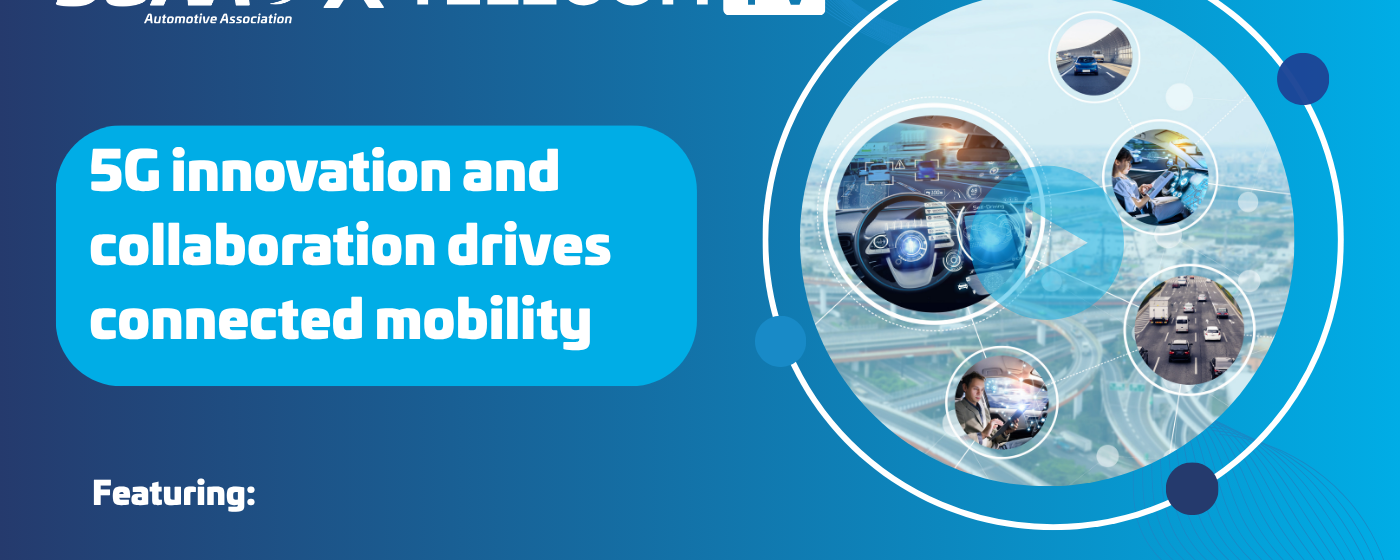
5G innovation and collaboration drives connected mobility
Andreas Schaller, Head V2X Technology Strategy, Bosch Mobility
Video interview by TelecomTV.
Andreas Schaller discusses the role of Bosch Mobility in the connected mobility sector and the importance of 5GAA in aligning industry objectives. He highlights current 5G applications in automotive, such as entertainment and automated parking, and explains what advancements we can expect to see with future 5G releases from 3GPP, including non-terrestrial network support. He also calls for scalable solutions that will work globally to ensure successful implementation, and reiterates the need for continuing collaboration between the telecom and automotive industries if we are to achieve fully autonomous driving.
Recorded October 2024.
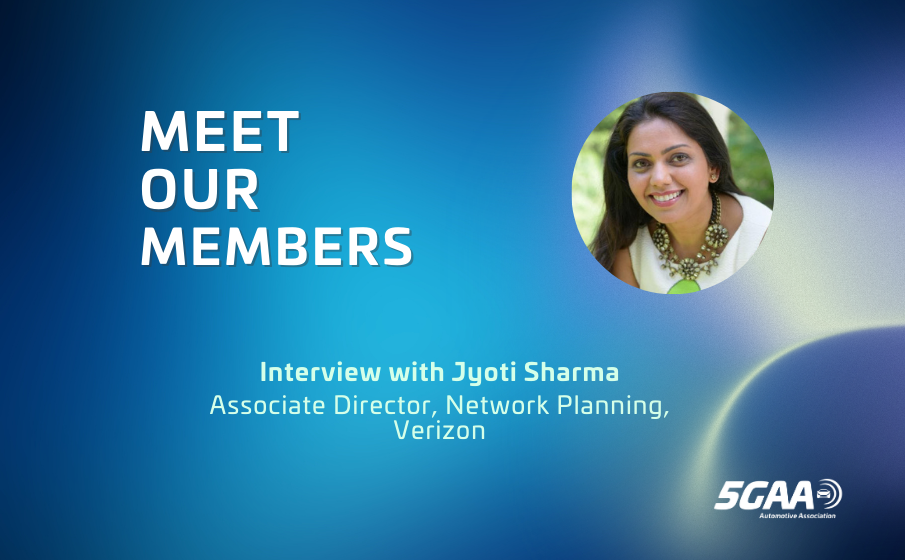
Meet Our Members – Interview with Jyoti Sharma, Verizon
In our ongoing “Meet Our Members” series, we explore the unique journeys and expertise of the individuals who make the 5G Automotive Association. Each interview sheds light onto the incredible work, vision, and passion of the people behind our organisation. You can check out our last conversation with Menno Malta, CEO of Monotch, here.
This time, we introduce Jyoti Sharma, Associate Director of Network Planning at Verizon and alternate board member at 5GAA since 2021. Jyoti has brought her deep industry insight to a range of work items, including Vehicle-to-Network-to-Everything (V2N2X) and has led initiatives such as the Vulnerable Road User (VRU) Demo. Her commitment to accelerating the large-scale deployment of V2X technologies make her a valuable contributor to the 5GAA, and we’re excited to learn more about her perspective on the future of 5G and MEC in transportation.
Could you tell us briefly about Verizon’s involvement in 5GAA and how your company benefits from being a member?
Verizon has been an active member of 5GAA since its inception. We started out as a general member and initially contributed at the working group level. We saw tremendous value in taking a leadership role in 5GAA as a major U.S. telecommunications provider and were elected by the members as a gold board member in 2021. Currently, Verizon is a platinum board member of 5GAA and we are playing a critical strategic role as one of the key stakeholders in the V2X ecosystem.
When did you first become part of the 5GAA board? What are some of your responsibilities, and what has been your most rewarding experience so far?
I represent Verizon on the 5GAA board as an alternate board member since 2021. In my role as a board member I have the privilege and responsibility to ensure 5GAA remains focused on key strategic focus areas which will accelerate a large-scale deployment of Vehicle-to-Everything (V2X) across the globe. My most rewarding experience has been to collaborate with other 5GAA members who are leaders from auto OEM customers, their tier 1 suppliers, chipset and module providers and other ecosystem partners. This technical collaboration between all the stakeholders is the key to drive innovation and unlock the full potential of V2X communications at scale and make it a reality.
Can you share any recent examples of how Verizon has collaborated with other 5GAA members to drive innovation in the industry?
Verizon has taken a leadership role in bringing the V2X ecosystem partners together under the 5GAA umbrella. We have demonstrated thought leadership in defining the network architecture to solve challenging V2X requirements leveraging key technology enablers such as 5G, multi-access edge computing (MEC) and Hyper Precise Location. Our recent V2X VRU (Vulnerable Road User) demo in Detroit showcasing interoperability between different network operators and application providers generated a very positive response and engagement from auto OEMs, Departments of Transportation and road operators. The demo was successful due to close collaboration with several 5GAA member companies.
As the lead of the VRU DEMO Work Item, could you elaborate on the significance of demonstrating interoperability in the context of Vulnerable Road User protection solutions?
VRU DEMO is one of the key strategic focus areas at the 5GAA board level that the industry has been trying to address for many decades. We believe the C-V2X and other technology enablers (5G, MEC, Hyper Precise Location) are ready to mitigate the number of road accidents involving vulnerable road users such as pedestrians and cyclists. In order to deploy such a VRU solution at scale it needs to work across multiple operators, multiple auto OEMs, multiple application providers and multiple cloud providers. We reached a significant milestone by demonstrating interoperability amongst different stakeholders and showcased the technology is ready to deploy at scale with existing networks. The learnings from the demo are being replicated in other parts of the world and are informing U.S. DOT V2X Deployment plans.
What criteria were used to select the specific use cases for demonstration in VRU DEMO? How did these use cases represent real-world scenarios and challenges?
There has been extensive discussion within 5GAA to define different VRU scenarios. Different flavors of VRU use cases have been documented in published technical reports. The demo team carefully selected most common real world VRU scenarios such as active pedestrian crossing alert and using roadside cameras and artificial intelligence, machine learning logic in the MEC to detect pedestrians and alert the drivers to avoid potential collision.
Verizon participated in the demos with a showcase of its network solution using multi-access edge computing. How does MEC differ from traditional network-based computing in terms of its benefits for VRU protection applications?
MEC allows us to bring traditional cloud compute and storage within the mobile network closer to the edge where the data is generated reducing the end to end latency. It is well established that MEC is a key differentiator and technology enabler for latency critical use cases such as VRU protection. Verizon has already deployed public MEC across the United States in partnership with cloud providers. We continue to drive innovation by developing standard MEC and Network APIs for application providers. During the VRU demo we demonstrated near real time VRU alerts over 5G and applications hosted on Verizon’s Detroit MEC.
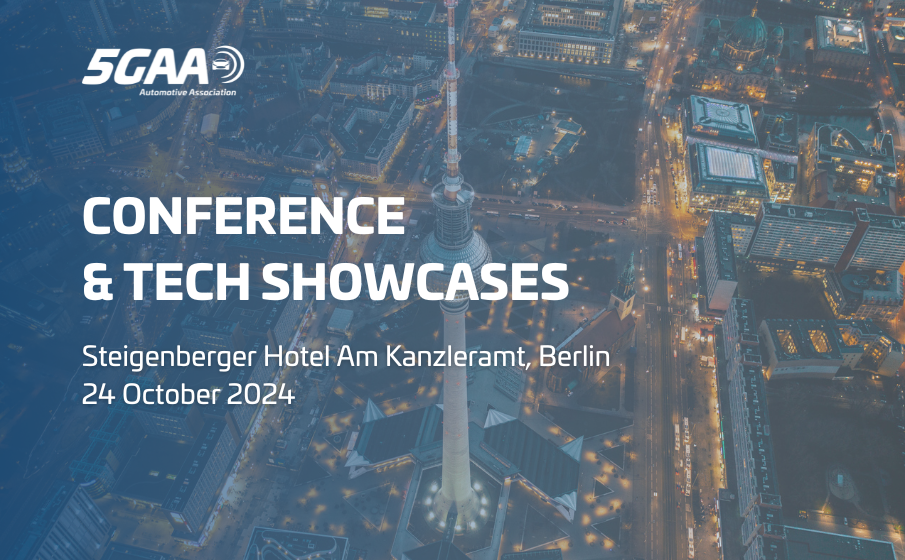
5GAA Members to Demonstrate Latest C-V2X Tech in Berlin
The 5G Automotive Association (5GAA) will host a technology demonstration event in Berlin on 24 October, showcasing the potential of Cellular Vehicle-to-Everything (C-V2X) technology to redefine mobility across Europe. The event will take place with 5GAA members, leaders from the automotive, telecommunications and technology sectors; it will feature over 10 indoor and outdoor demonstrations that address both critical safety and advanced applications.
C-V2X leverages cellular networks to connect vehicles with each other, infrastructure, and pedestrians, aiming to enhance safety and convenience on the roads. This technology has gained momentum globally, with favourable legislative frameworks in Europe, the U.S. and beyond, and commitment from automakers. This signifies a robust ecosystem that is ready to leverage a huge amount of already existing connected vehicles and deploying further C-V2X solutions at scale.
In countries like Germany, traffic accidents remain a significant concern, with the country alone recording 2.5 million incidents in 2023 and pedestrian safety a growing issue. It is also estimated that up to 40% of traffic in German urban centres stems from drivers searching for parking. C-V2X is positioned to address these challenges.
The Berlin demo event will build upon the 5GAA demonstrations held last year in Detroit, which revolved around vulnerable road user protection. This year, the focus will shift to showcasing similar and new use cases in a European environment, utilising existing European mobile infrastructure.
The event will be preceded by the 5GAA conference titled “Scaling Up Connected Mobility: What’s Next for Germany and Europe?” This combined event offers a unique platform for attendees to engage with industry leaders and stakeholders.
Registration and Media Inquiries:
For further information and registration, please contact secretariat@5gaa.org.
Journalists interested in attending can reach out to marcom@5gaa.org.


